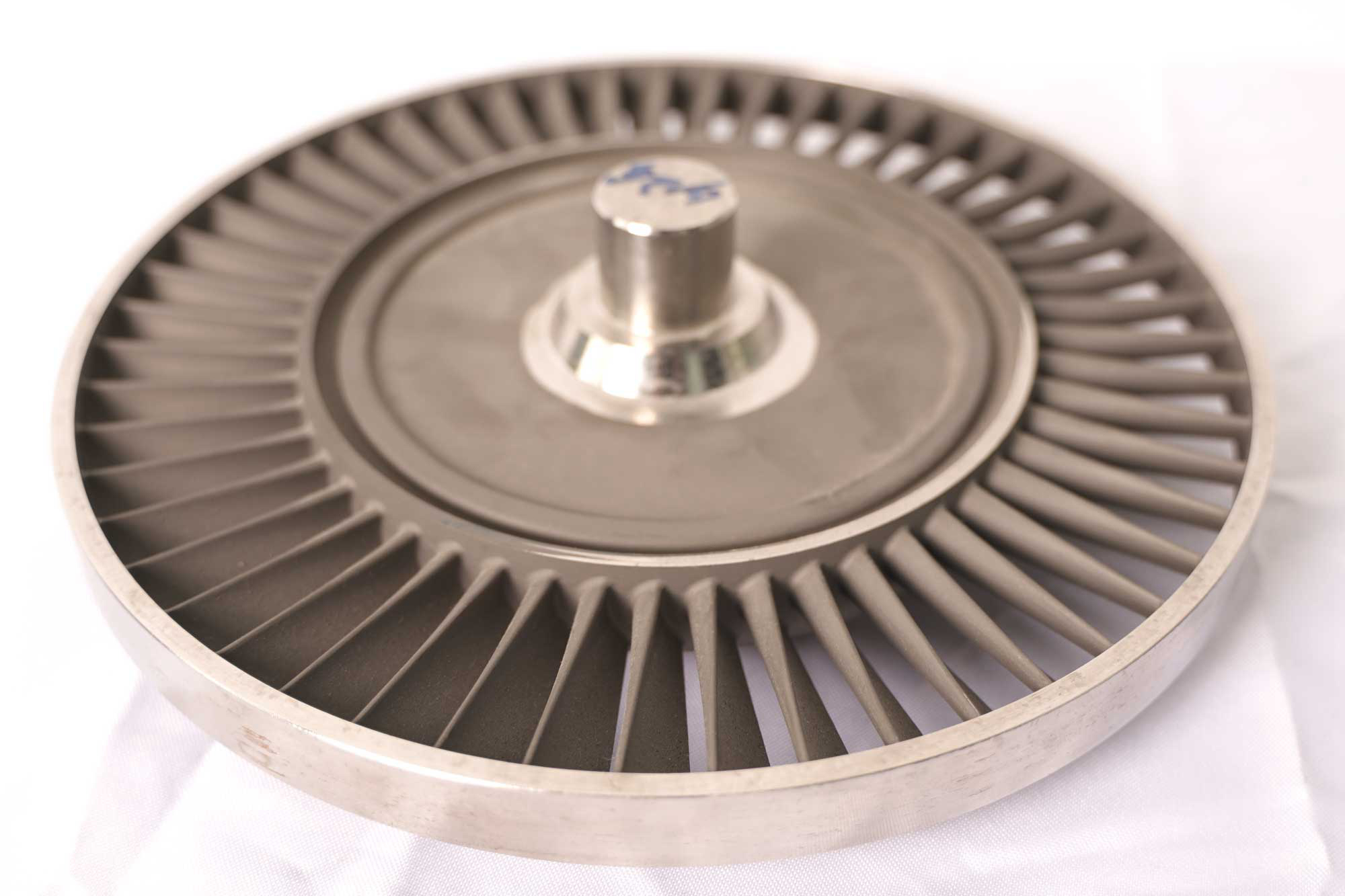Rene41 Superalloy Isotropic Crystal Casting Gas Turbine Components Factory
Introduction
Gas turbine components—including blades, vanes, rings, and seals—must withstand high-temperature environments, cyclic loading, and corrosive combustion gases. To achieve the necessary mechanical strength and oxidation resistance, nickel-based superalloys are the materials of choice. Rene 41, a precipitation-hardened nickel-chromium superalloy, is known for its outstanding strength and thermal stability up to 980°C. When manufactured via isotropic crystal casting, Rene 41 provides consistent mechanical properties in all directions, making it ideal for complex, multi-axially loaded gas turbine components.
As a leading gas turbine components factory, Neway AeroTech specializes in vacuum investment casting of Rene 41 using equiaxed isotropic solidification. Our fully integrated processes include heat treatment, HIP, CNC machining, and quality control services for delivering precision turbine parts that meet AS9100 and NADCAP standards.
Core Technology of Isotropic Casting for Rene 41 Gas Turbine Components
Wax Pattern Production High-fidelity wax patterns are molded to replicate blade, vane, or ring geometries with ±0.05 mm tolerance and integrated cooling designs.
Shell Mold Construction Multi-layer ceramic shell molds are built up to 8 mm thick to withstand molten metal temperatures and support equiaxed grain formation.
Vacuum Induction Melting Rene 41 is melted at ~1380–1400°C under vacuum (≤10⁻³ Pa), maintaining chemical consistency and minimizing gas entrapment.
Equiaxed Isotropic Solidification Metal is poured into preheated molds, then cooled under controlled conditions to form uniform, randomly oriented equiaxed grains—providing isotropic mechanical behavior.
Shell Knockout and Cleaning Post-solidification, ceramic molds are removed using high-pressure water blasting and chemical leaching to preserve surface integrity.
Hot Isostatic Pressing (HIP) HIP at 1175°C and 150 MPa removes internal porosity, improving fatigue life and mechanical uniformity.
Heat Treatment Solution and aging treatments optimize γ′ precipitation, enhancing strength, creep resistance, and structural reliability.
Final Machining and Inspection Final geometry is achieved via CNC machining and EDM, followed by CMM and X-ray inspection.
Rene 41 Material Properties in Isotropic Cast Form
Max Operating Temperature: 980°C
Tensile Strength: ≥1240 MPa at room temperature
Creep Rupture Strength: ≥170 MPa at 871°C for 1000 hours
Yield Strength: ≥1030 MPa
Oxidation Resistance: Excellent in turbine combustion environments
Microstructure: Equiaxed, isotropic grain distribution (ASTM 5–7)
Case Study: Equiaxed Cast Rene 41 Nozzle Ring and Blade Segment Production
Project Background
Neway AeroTech manufactured nozzle segments and rotor blade bases for a 50 MW gas turbine operating at ~950°C. The customer required high fatigue strength, oxidation resistance, and isotropic microstructure to ensure equal performance in all load-bearing directions.
Application Examples
Nozzle Guide Vanes: Static components that redirect hot gases at turbine inlet, requiring dimensional stability and thermal fatigue resistance.
Turbine Blade Root Hubs: Regions subjected to multi-axial stress during rotation and temperature ramp-up.
Combustion Chamber Sealing Rings: Demanding uniform mechanical strength and long-term oxidation resistance in high-pressure, cyclic heat zones.
Flow Baffles and Turbine Diffusers: Thin-wall castings requiring isotropic stress distribution and weldable integrity.
Manufacturing Process for Rene 41 Isotropic Turbine Components
Design and Simulation Component geometry and gating systems are optimized via CFD simulation to promote uniform solidification and eliminate shrinkage defects.
Vacuum Casting Execution Equiaxed casting is performed in vacuum furnaces with mold preheating and controlled cooling to form isotropic grain structures.
HIP and Heat Treatment HIP removes porosity, while heat treatment ensures stable mechanical properties and γ′ phase precipitation.
Precision Machining and Quality Control CNC machining, EDM, X-ray, and CMM inspection are performed to guarantee compliance with technical drawings and NDT standards.
Key Challenges
Preventing hot tearing and cracking in thick-wall sections during equiaxed solidification
Achieving uniform grain structure across components with complex curvature
Maintaining mechanical properties after post-casting welding or repair
Ensuring weldability and low residual stress in finishing operations
Results and Verification
Grain size ASTM 6–7 confirmed via metallographic cross-section
No porosity or inclusions after HIP in high-stress areas
Dimensional precision within ±0.03 mm across airfoils and sealing faces
Mechanical properties exceeded target stress values across sample batches
100% NDT pass rate including ultrasonic and radiographic inspection
FAQs
What are the advantages of using Rene 41 in equiaxed casting?
Why is isotropic grain structure important for gas turbine components?
What’s the difference between isotropic and single crystal casting?
How do you verify the mechanical properties of equiaxed Rene 41 parts?
Can Rene 41 parts be repaired or welded after service exposure?

